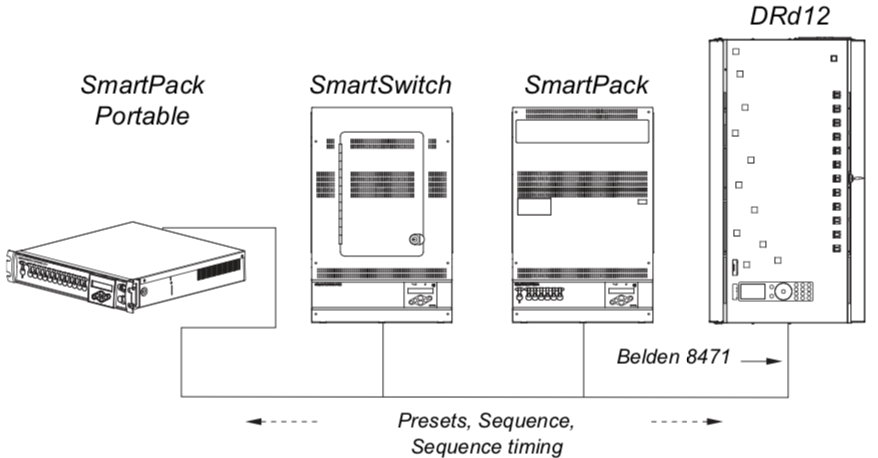SmartLink Pack Synchronization
It is possible to synchronize presets and sequence activation across up to four SmartLink host products when they are connected on a SmartLink network. SmartLink connected products share various configuration parameters and events, known as host messages, as sent from the host product.

Preset and Sequence Synchronization
Default functionality is that the last SmartPack or SmartSwitch updated in the system acts as the host product and sends its host messages to the other SmartLink enabled products in the system. Each product (SmartPack and SmartSwitch) will retain its own preset and sequence configuration as programmed but when a host product is selected each SmartLink enabled product will activate and play its sequence with the number of steps and timing (fade up, fade down, hold time) as sent by the host product.
Preset Synchronization
Selecting a preset on any pack affects the same numbered preset to run on all inter connected SmartLink enabled products simultaneously.
If “Preset 1” is activated from the facepanel of a SmartPack:
That SmartPack will act as the host product and send its host messages to the other SmartLink enabled products in the system to activate “Preset 1”. The preset will activate with the same fade up time, hold time, and fade down time as sent from the host product.
Sequence Synchronization
Activating a sequence on any pack causes all connected SmartLink enabled SmartPack and SmartSwitch products to run the same sequence in lock-step synchronization using the host product fade up, hold, and fade down times. In addition, sequence loop “yes” or “no” will be sent from the host product to all inter-connected SmartLink enabled products to ensure lock step synchronization.
If the sequence is activated from the facepanel of a SmartPack:
That SmartPack will act as the host product and send its host messages to the other SmartLink enabled products in the system. Each SmartLink enabled product in the system will activate the sequence as sent from the host product with steps and timing synchronized. If one product in the system does not have specific step recorded and the host product sends the message to play that step, the receiving product will simply ignore that command and pick up with the next recorded event.
